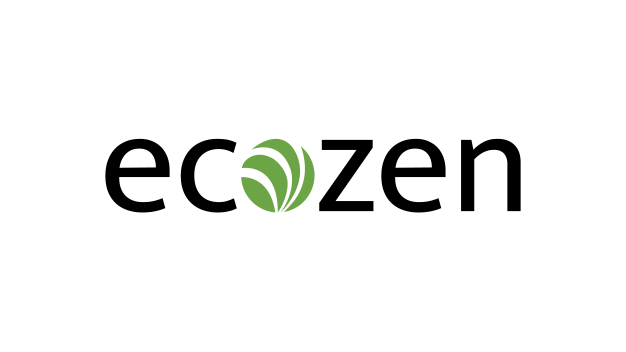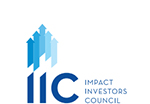|
Action for Impact
Dialogue with Anirudh Pachisia, Ecozen Solutions
|
|

1 Ecozen has scaled up its business in the last few years. It would be helpful to understand some of the factors that have helped do so. As the business records a positive bottom line in the FY23, what has been the key contributor that has helped you scale up the topline and also a positive bottom line?
|
Ecozen is a tech company that builds climate-smart technology solutions. While we are developing solutions for sectors beyond agriculture, like e-mobility, consumer, retail and industry, our numbers come in from two main products right now. Those are solar pumps and solar cold rooms. Solar Pumps is a much bigger vertical for us, contributing to a majority of our total revenue.
So, what has really scaled very fast is the solar pumping piece. A couple of reasons for that, the larger reason is on the macroeconomic side where the number of tenders and orders from state distribution agencies have increased due to on ground acceptance and increase in demand for solar pumps. The central government has supported this via the PM Kusum Yojana and also certain state governments have been advocating this via additional state level tenders.
The subsidies on solar pumps are not just a welfare measure but achieve significant economic benefits for electricity distribution companies (DISCOMs) while directly benefiting farmers. Both DISCOMs and farmers are our valued customers.
DISCOMs are mandated to provide power to all farmlands and villages, typically creating infrastructure to supply power to villages. However, the surrounding farmlands often remain without electricity for borewells. Farmers apply for power lines to run electric pumps for irrigation, but extending infrastructure to these areas is costly for DISCOMs.
Providing a one-time subsidy for solar pumps is more economical for DISCOMs than extending power infrastructure. These subsidies are funded through a pool of resources from the central and state governments, soft loans from development agencies, and DISCOMs' own funds. This scheme has been growing over the past seven to eight years.
The second aspect for the increase in our turnover is access to funds and the change in strategy to forward integrate into taking higher orders for execution of solar pumps. We raised some equity funding in 2021 - 2022, where Nuveen, EXIM Bank, Samunnati, and Dare Ventures came in with Equity of Rs 113 Crores. This helped us attract lower cost debt from banks and NBFCs. For direct installations, the debtor days are much higher (90-150 days) compared to component sales, with access to low-cost debt lines we were able to take a larger bet on direct installations part of the business (65% of turnover) which helped increase turnover and absolute gross margins.
Earlier we were doing more of component supply for the solar pump, i.e. selling controllers, pumps and motors with some direct installations (30-35%) to have a direct connect with the farmers and be connected to on ground activities. At this time, our turnover ranged between INR 30 to 70 crores. With the change in strategy and growth in the market, we have closed a topline of INR 466 Crore in FY24 (unaudited).
|
2 a. As you are looking at forward integration, given the operational cost increases, does that also affect your margins? Can you help our readers understand more about your approach?
|
As Ecozen we see ourselves as a climate-smart tech solution developer, a large part of the installation is not done by us directly but outsourced to installation partners, but we do have our service teams located across geographies to cater to customer queries and tickets.
b. Since the majority of your sales are from the government would you also be looking at diversifying this dependence and reaching out to others?
DISCOMs currently have lacs of open applications from farmers for powering their borewells due to which we see the increase in tender volumes. Given our history of being in the industry for a long time and our installation numbers, we have a high probability of winning good numbers in tenders we participate in. So, demand is not a constraint presently, but we also are thinking ahead that two or three years down the line, if subsidy comes down or anything else happens then what?
As a trend we are seeing that the cost of these systems over the last four to five years has come down through better engineering and economies of scale. Second, farmers have understood that this technology works and it is something that is very useful for them. Third, there are some parameters which need to be ticked so that farmers can apply for solar pump subsides. Also, some farmers do not want to wait for the next scheme to come. There is already some demand coming up for buying solar pumps in the private market. However, a key challenge here is providing low-cost financing for farmers which we are trying to solve. We are working on developing a feasible financial product with NBFCs and Banks along with that some gap funding / guarantees from foundation and development agencies.
c. When it comes to farmers, specifically small-scale farmers where a climate-smart tech solution’s impact can be witnessed, maximum are constrained with financing.
With Ecozen’s solar pumps, can you help our readers understand, if the pumps are only for a particular size?
There are different kinds of pumps typically from 3HP, 5HP, 7.5HP that are good enough for 2 to 5 acres of farmland. But financing farmers is a difficult task. Let’s look at an example - on the solar cold room side.
Our solar cold rooms are a high-ticket item. Pre-Covid, a year before the lockdown, we got national level tie ups done with a couple of banks to finance farmers. We approached 30 farmers to see if they wanted to buy an Ecofrost, and out of them 10 agreed, we presented their case to the banks and they could finance just one customer. We realized that this is not going to work. We cannot really do the operations to try to first get the customer and then get him financed as well.
We pivoted from there as we realized that to cater to the small and midsize farmers, it is better to get funding ourselves at a company level and then give the units to them on lease. Normally harvest periods are between three to six months of the year, so they actually need the cold room just for that. This works as our cold rooms are portable.
The way this model works is season based, as an example December - January units would be in Mahabaleshwar catering to strawberry harvests, post that it would be in Himachal area for cherries, then in Bihar for lychees, and then get into the flower belt for the wedding season and keep rotating in this manner. One unit might probably not do all of this, but two - three of these in a year would kind of work or they would be like in one particular geography, where we could get a lot of different commodities. Every crop has a different harvesting cycle, so even in smaller geographies we found some regions where rotation could happen. So, that is how we managed to make small and mid-sized farmers as a customer for the solar cold room. We don’t want to get our books too heavy; we have proven the model and now we are driving this business through the books of NBFCs.
On lease models with farmers, we take three months advance lease payment and the units are insured, we also have the optionality to switch off the unit remotely, in case of payment failure as an added safety mechanism.
|
3 With respect to the coldrooms, who is it usually used by? Is it by the collective of farmers or is it one unit per farmer?
|
Collectives use it more. At an FPO harvesting would happen across the year, considering multiple crops, larger cultivating area, so FPOs are a good customer to buy the units. Even here there was an issue in getting them finance, because a lot of them were very new and did not have a proper balance sheets to share with lenders for credit evaluation. Some foundations helped with gap funding to help FPOs in purchasing these units.
Apart from FPOs, Ecofrost finds use with medium to large farmers growing high value perishable commodities and fresh supply chain companies for their collection and distribution centres. There is also a larger export market for Ecofrost in Africa and South East Asia which we have begun tapping.
One of the other reasons for how we became profitable, we focused more on the gross margin, quantitative businesses, sale of Ecofrost, trying to get the farmer finance, the solar pumping side, the converters, motors and those entire solutions. All of these are good gross margins for the business. At around 70 crores turnover, we were EBITDA positive and at 120 crores, we were cash profit positive.
|
4 Over the last few years, we have witnessed an increasing number of agtechs getting themselves involved in market linkages, given its operational intensity and its impact on margins, based on your experience how do you think one can balance this out?
|
As they are close to the customer, they feel that they can give them a lot more. Market linkages look like a low-hanging fruit to increase turnover. But managing operations and working capital here is challenging.
Even we tried selling pre-cooled produce to multiple fruit or vegetable vendors across Delhi and Bangalore, but we realized how difficult it is to do timely collections from small vendors. We are not an NBFC where we could check their CIBIL score and other metrics before making credit sales which was required as we were launching pre-cooled produce as a separate category, in case of non-payment there are limited viable routes for recovery.
Perishability is another challenge, we had very less of that as we were using end to end cold chain. So, it's a challenging business, unless the organisation is geared towards managing the operational intensity it demands and you can solve for credit risk by selling direct to user without credit. In our case, we possess a more tech and product development DNA.
|
5 Based on your recent experience with the debt that Ecozen has taken, how are you now seeing banks or NBFCs understand the agritech landscape?.
|
We were able to attract debt in 2017 itself via order based financing structures. NBFCs would finance part of the order and we had to repay the loan in 90 days. Once they get the money back, that limit opens up again. Caspian and Northern Arc gave us access to these facilities, SBI had given us a limit of one crore under CGTMSE scheme, and was our sole bank funding for a very long time till we turned profitable.
Post our 2019 equity fund raise, we also managed to access funds from other NBFCs like Maanaveeya and UC Inclusive Credit, as we were scaling. As soon as we became almost cash-positive, we wanted to start working with banks to access lower cost capital. It was very challenging for us to get the first bank in. At that time, banks were trying to help fund startups, some banks had separate departments focusing on startups. But when discussing commercials and creditworthiness, they used the same ratios that they were using for old economy companies and large corporates.
We got initial support from HDFC who gave us a small limit against a collateral of 70% FD margin and then using that, we had to work towards increasing turnover and profitability to better fit into their ratios. We reached out to almost 12 banks, trying to convince them to support startups and they will need to develop different metrics to evaluate us compared to old economy companies. They had to look at cash flows rotations instead of just focusing on old economy ratios and take some comfort from marquee investors on the cap table.
Banks are ready to give us debt now as we are PAT positive and scaling, but we are finding it difficult to reduce the FD margins being given as collateral. Axis Bank’s New Economic Group and ICICI teams were more receptive and helped bring down the FD margins to 35% currently.
|
6 Impact linked financing is now catching attention. Given that cold chain solutions have a strong social and environmental income, do you see it practically feasible to link financing interest rates and investment amounts to quantification of impact? Or do you see this as a challenge more in terms of reporting the impact metrics?
|
Most impact creating companies are already tracking impact if they have an impact focused investor or lender as a stakeholder. So, there is no additional work that a company would need to do on their side.
If we can showcase the overall impact as a group of AgriTech / Climate-smart Tech companies to the government, on how these group of startups are working towards helping the nation achieve the Net Zero mandate, there could be some support carved out for us in the form of interest subversion, loan guarantees, etc. similar to the way government is supporting EV industry with subsidies.
|
7 To conclude, what do you suggest to agritech or climate tech enterprises that are looking to raise capital or looking to raise debt? What are some of the other critical aspects that they need to be aware of?
|
The most important things that impact funds are looking at now is profitability, meaning you would need to be at least gross margin profitable on a consistent basis and have a clear path towards Net Profit. The days of continuous cash burn to get GMV are passe.
There also needs to be a large SAM for your products/services along with defendable differentiation. Ability to break constraints and achieve the committed targets specially since the time a new investor starts engaging with the company. Good corporate governance practices, high quality auditors, transparency in data sharing and a highly motivated 2nd line of senior managers supporting the promoters. These are very simple points but these are the basics that you need to have, to attract quality equity investors.
For attracting debt funds, cash cycle movement is an important metric, your repeat customer rate, and debtor aging. These are the biggest metrics. For fast-growing companies, only relying on bank funding would not be sufficient as they would be funding basis last month’s drawing power, NBFC or equity funding would be required to invest in revenue growth. Marquee investors help attract NBFCs, while high cash balances and credit ratings helps with bank funding.
|
|
|
Anirudh Pachisia, Chief Financial Officer, Ecozen Solutions
Anirudh currently serves as the Chief Financial Officer at Ecozen. Prior to that, he was the Lead Corporate Finance at Ecozen.
Anirudh has a demonstrated history of working across the finance domain for the past 18 years. Skilled in Equity and Debt Fund Raising, Business Planning, Stakeholder Management, Mergers & Acquisitions, Financial Structuring, Team Building Change Management and Strategy.
Anirudh also has an MBA in Finance from the S.P. Jain Centre of Management.
About Ecozen Solutions
Ecozen develops climate-smart deeptech solutions to develop a smart and sustainable future, its core technology stacks include motor controls, IoT and analytics, and thermal energy storage technology. Applying these technology stacks to the agricultural sector, Ecozen has revolutionized the cold chains (Ecofrost) and the irrigation industry (Ecotron), substantially improving the income of 200,000+ farmers and enabling the generation of over 1Bn units of clean energy(kWh). Presently the company is developing products based on its core tech stacks to go beyond Agriculture and beyond India.
|
|
About Impact Investors Council:
Impact Investors Council, India (IIC) is a member-based national industry body formed with an
objective to build and strengthen the impact investing eco-system in India. To know more about our work visit https://iiic.in or reach out to secretariat@iiic.in
|
Disclaimer: Data and Information in this newsletter is made available in good faith with the exclusive intention of helping market and ecosystem players, policymakers and the public build a greater
understanding of the Indian impact investing market. The data is collated from sources believed to be reliable and accurate at the time of publication. Readers are urged to exercise independent judgment and diligence in the
usage of this information for any investment decisions
Some of the information provided in this newsletter is supplied by third parties. It is important that all users understand that third party information is not an endorsement of any nature and has been put together with the
sole purpose of benefiting stakeholders.
|
| Unsubscribe |
|
|
|


